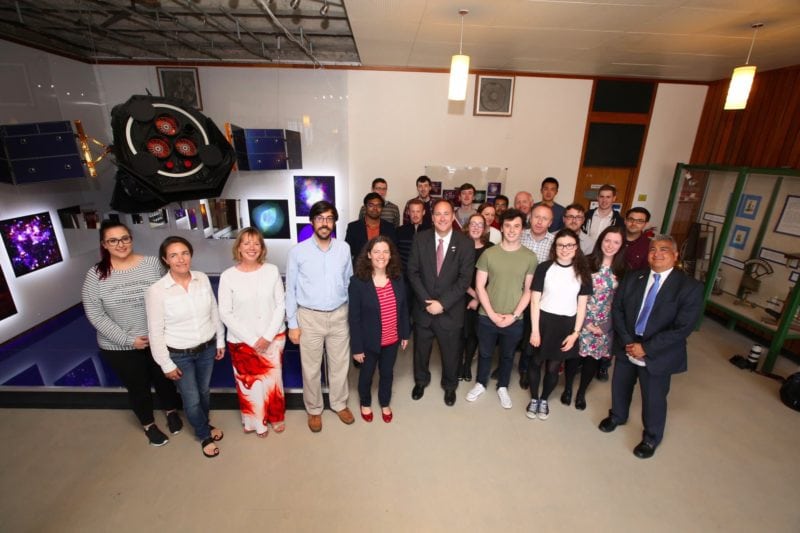Latest News

The EIRSAT-1 team. Photo: University
Ireland Minister for Training, Skills, Innovation, Research, and Development John Halligan revealed that Ireland’s first ever satellite, Educational Irish Research Satellite-1 (EIRSAT-1 ), successfully completed the first phase of the European Space Agency’s (ESA) Fly Your Satellite! Program (FYS) and the Critical Design Review – moving one step closer to launch. Minister Halligan made the announcement during a visit to University College Dublin (UCD), where he met with the interdisciplinary team of 16 UCD postgraduate students who are building the satellite with the support of ESA’s Education Office.
EIRSAT-1 is a miniature satellite, or cubesat, and is comparable in size to that of an average shoebox. Subject to passing further reviews and mission milestones, EIRSAT-1 is expected to be delivered to ESA in mid-2020 with three scientific experiments on board. The main experiment on-board the satellite will be Gamma-Ray Module (GMOD), a gamma-ray detector, which aims to detect gamma-ray bursts. The second experiment, the Enbio Module (EMOD), is an in-flight demonstration of thermal control coatings developed by the Irish company Enbio. The third experiment, called Wave-Based Control (WBC), tests a UCD-developed algorithm to control the movement of EIRSAT-1. After subsequent launch it is anticipated to operate for a 6 to 12 month period. Once in-orbit, the satellite will communicate data to Earth through a ground radio station, located at EIRSAT-1 mission control in the UCD School of Physics.
In May 2017 EIRSAT-1 was chosen to be part of the second cycle of the FYS. ESA has concluded that the objectives of the satellite’s Critical Design Review have now been achieved, marking an important milestone for the project. The UCD team now moves to the next phase of the program, and will begin to assemble and test an EIRSAT-1 prototype in newly installed clean rooms at the University.
The EIRSAT-1 mission is supported by industry partners including Enbio, SensL (now part of ON Semiconductor) and Parameter Space.
Get the latest Via Satellite news!
Subscribe Now